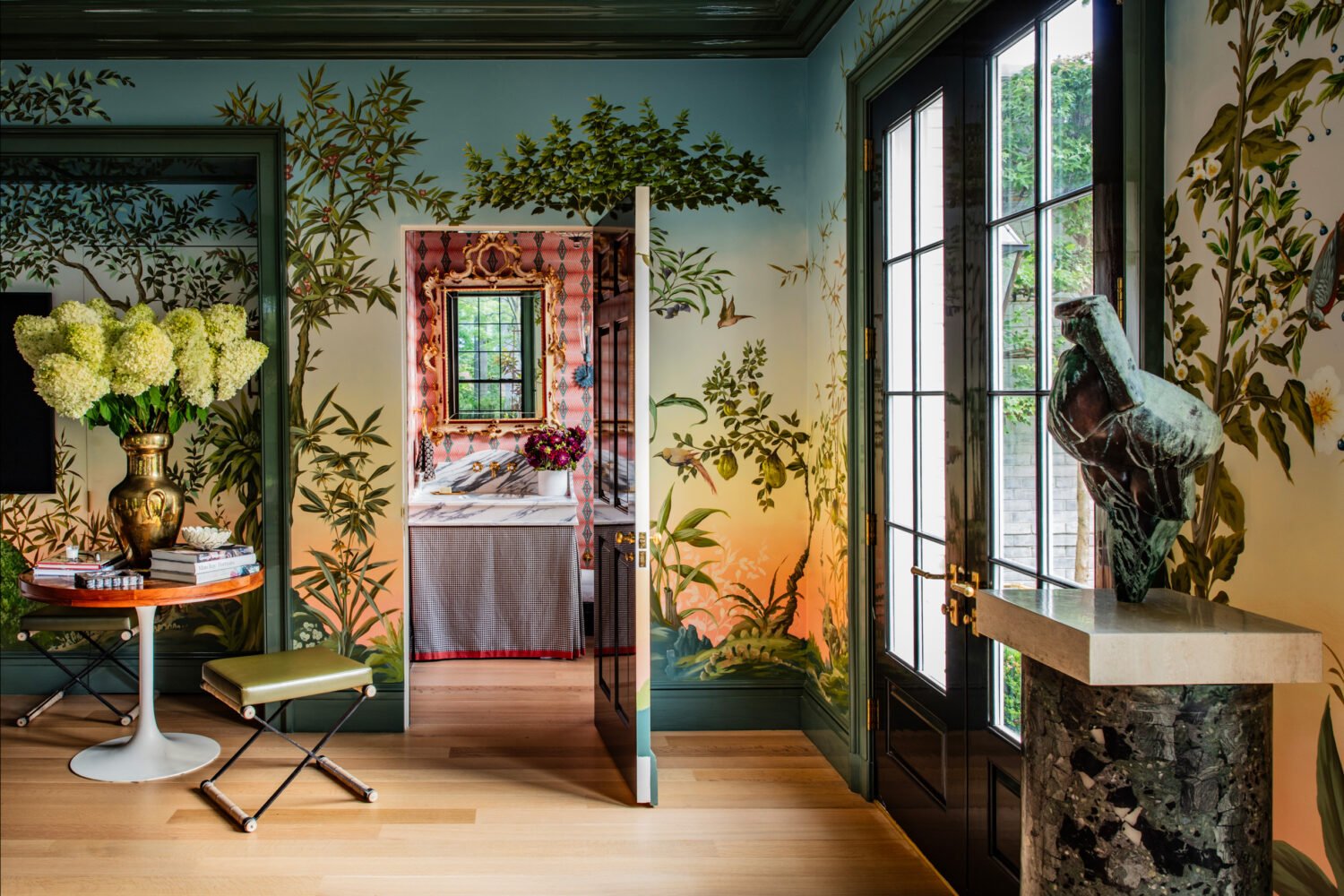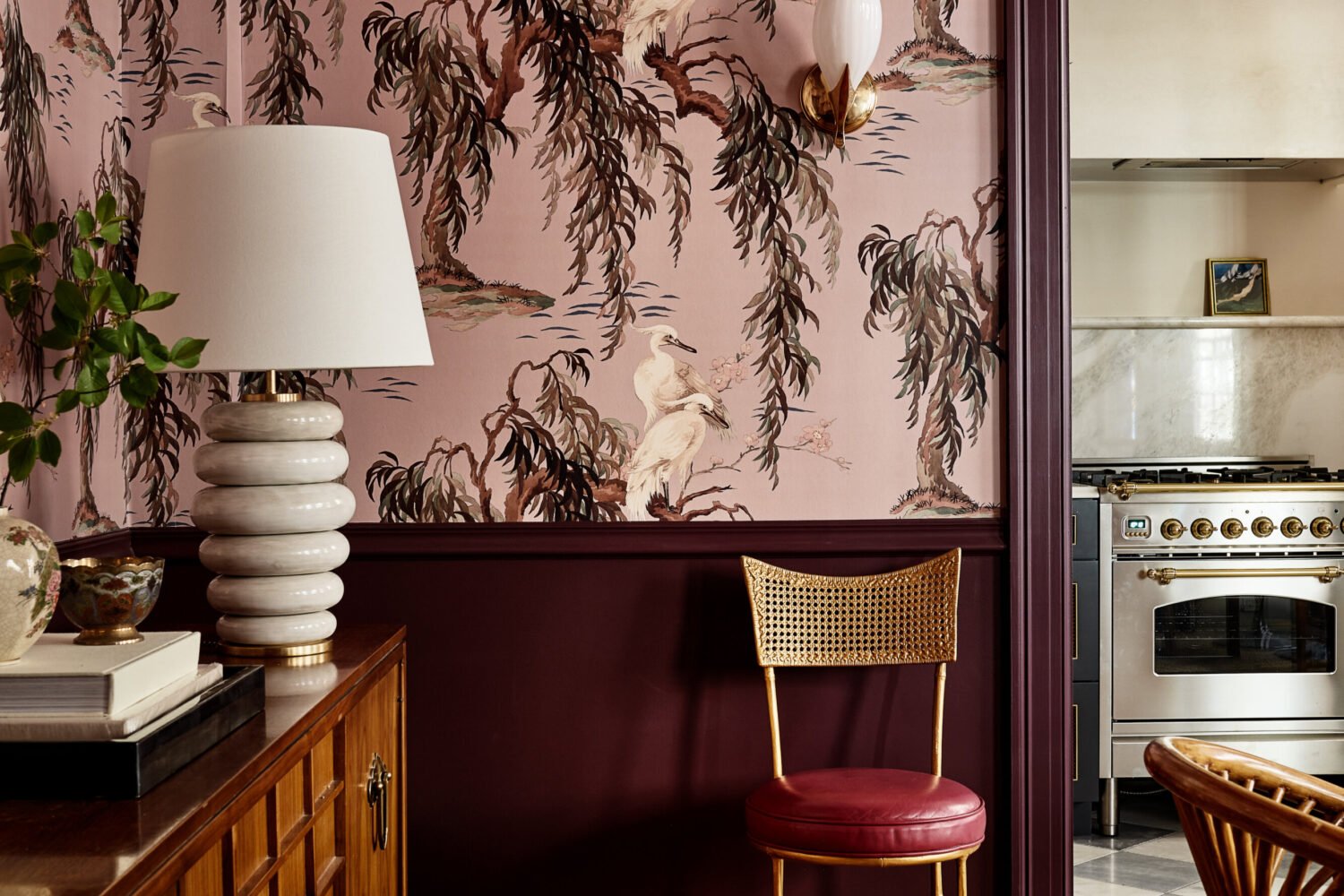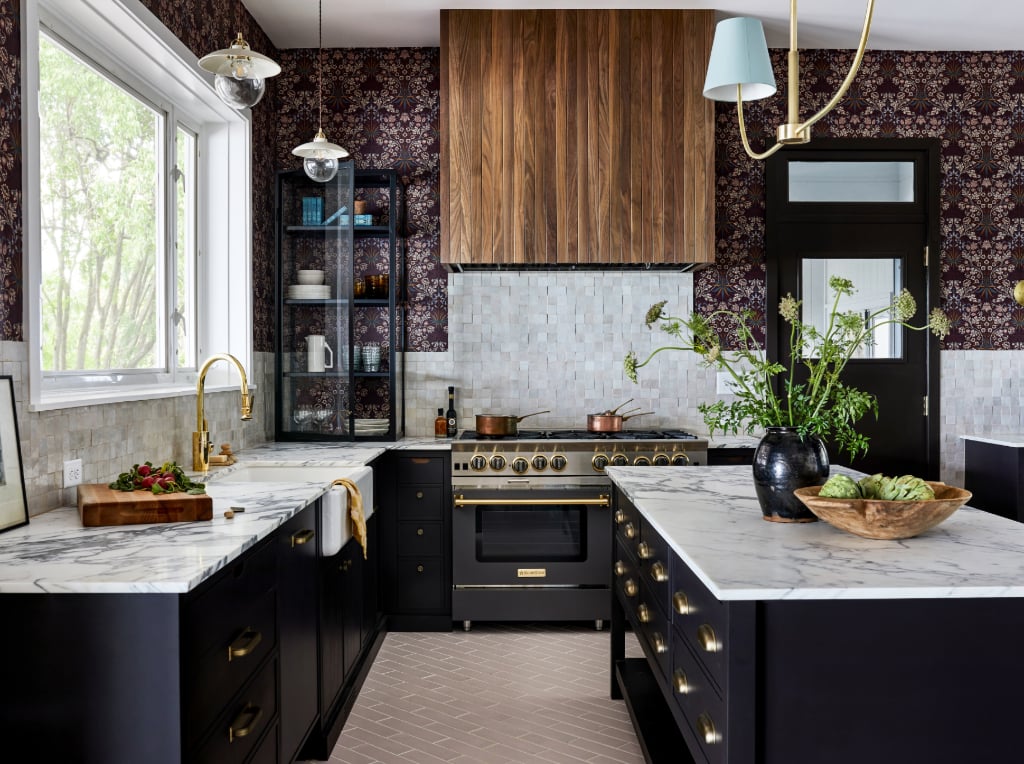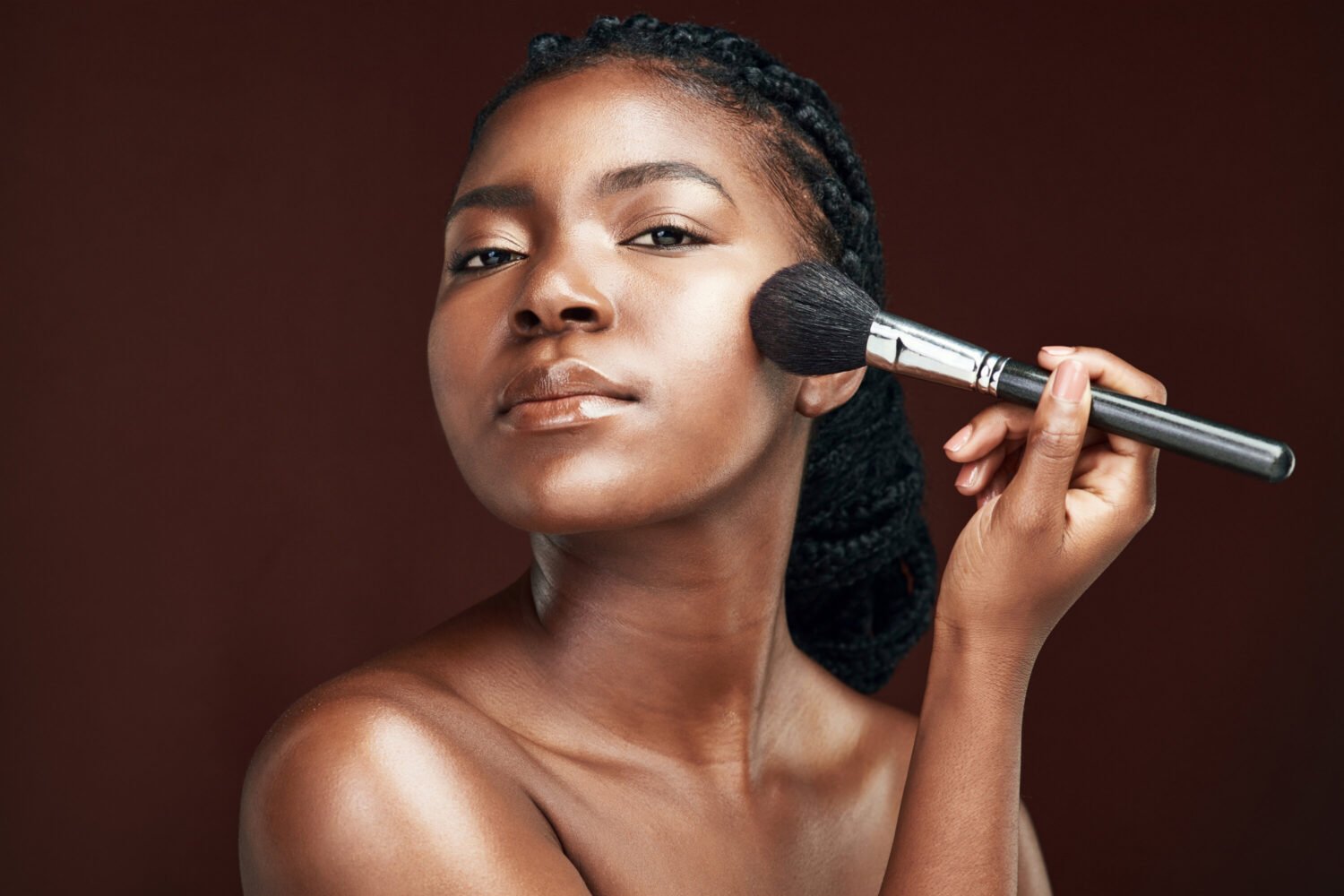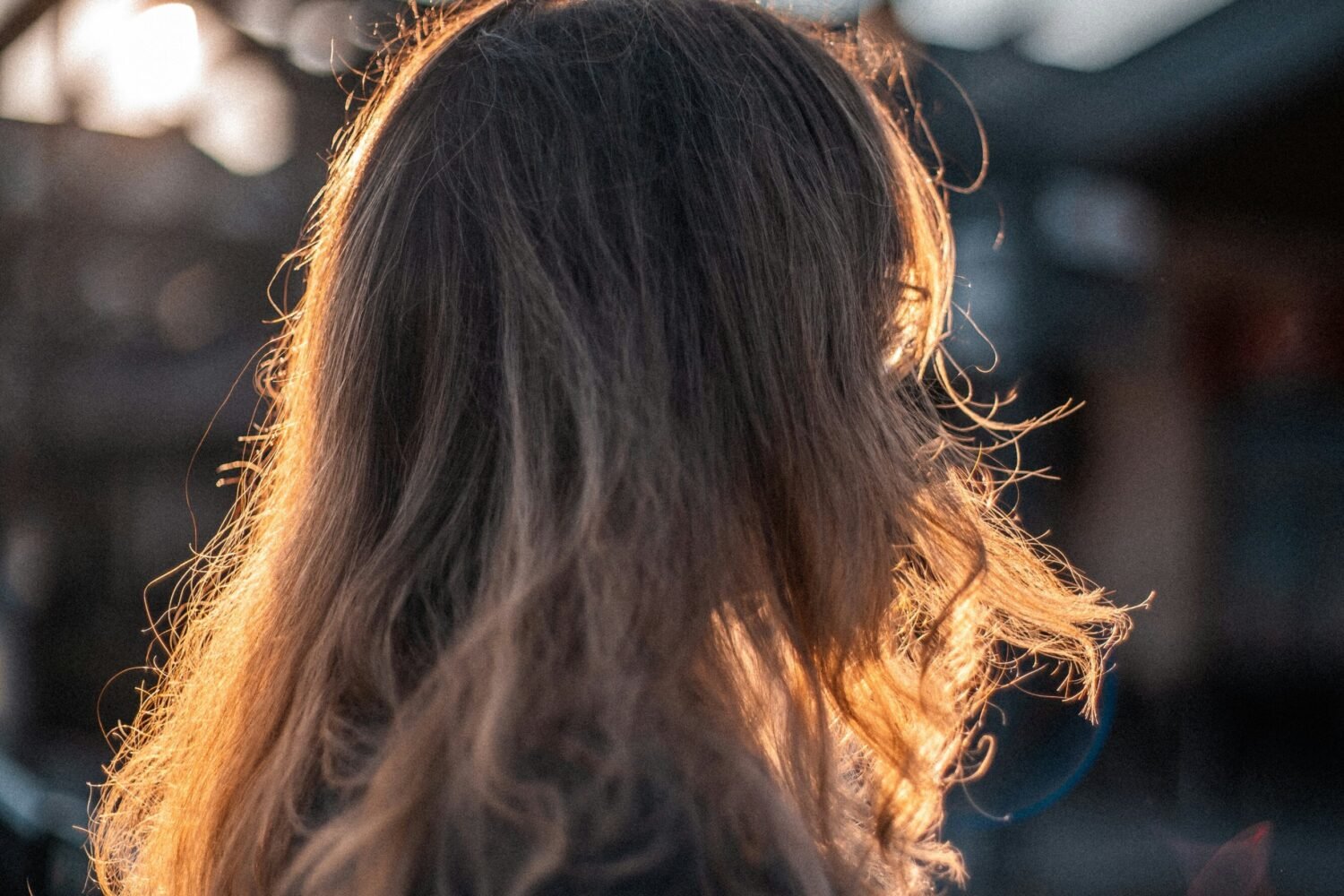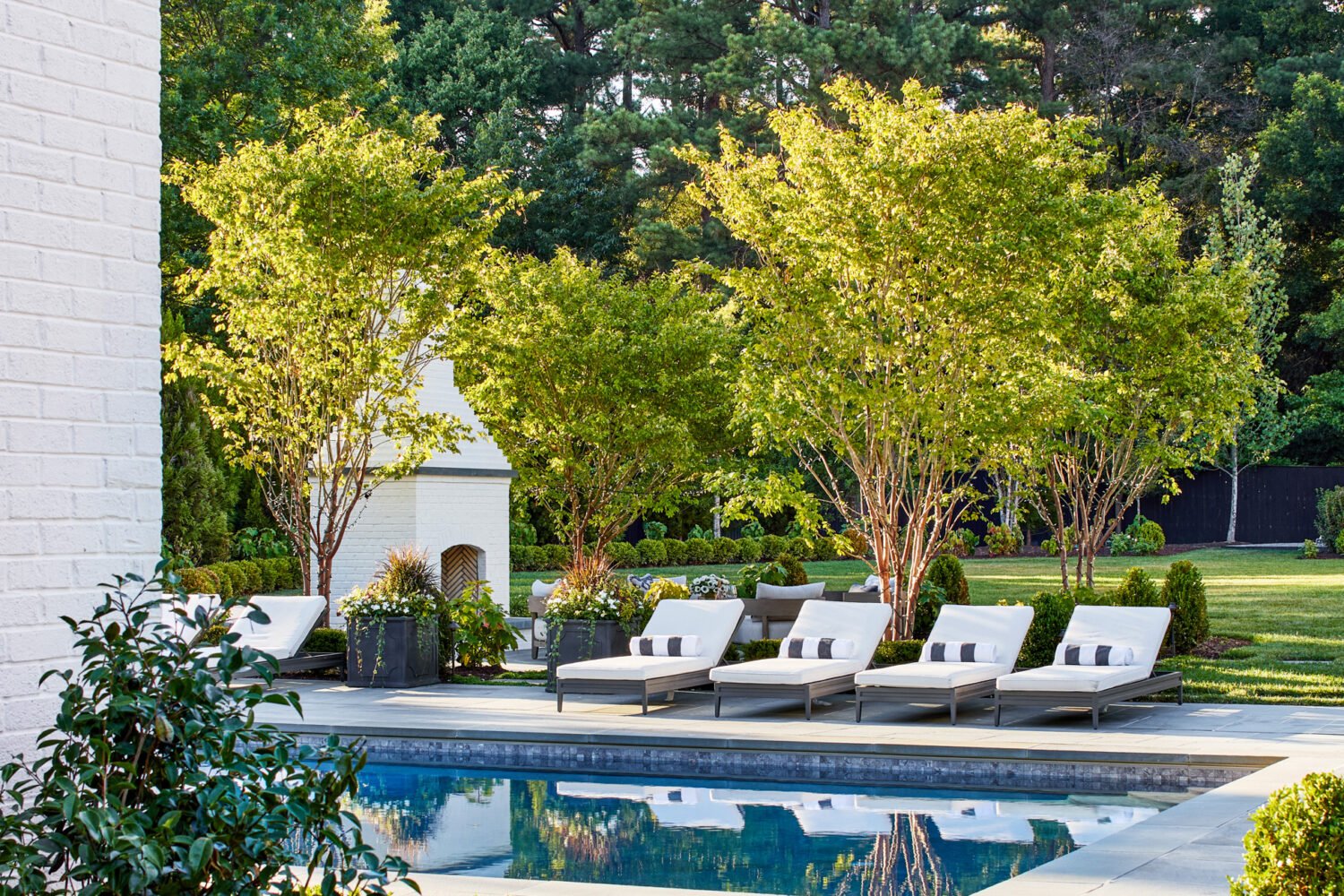“Green is a versatile color that transcends its trendiness if selected thoughtfully,” says Michael Winn, CEO and founder of Winn Design + Build in McLean. The key is thoughtfully—for example, choosing classic cabinet styles. Today’s greens, he adds, are also “more subdued and natural.”
Green has actually been used in kitchens and dining spaces for centuries. “Historical buildings such as Mount Vernon and the Governor’s Palace in Williamsburg have verdant dining rooms that would translate beautifully into the modern kitchen,” says Laura Hildebrandt, founder of Interiors by LH in Vienna. “Even Julia Child made her kitchen timeless by painting her cabinets blue-green.”
Colors found in the natural world—think trees, plants, produce—tend to have more staying power. “When picking a shade of green for the kitchen, I tend to pick colors from nature,” Hildebrandt says, not only because they’re soothing but because “humans are innately drawn to colors found in the environment.”
Maedeh Ziaei Moayyed, senior designer at TriVistaUSA in Arlington, says green isn’t the only color from the natural world showing up in the kitchen—she predicts we’ll see more warm terra cottas, sandy beiges, and creamy whites. “These create a calming and organic atmosphere in the kitchen,” she says, “which aligns with the growing interest in sustainability and wellness-focused design.”
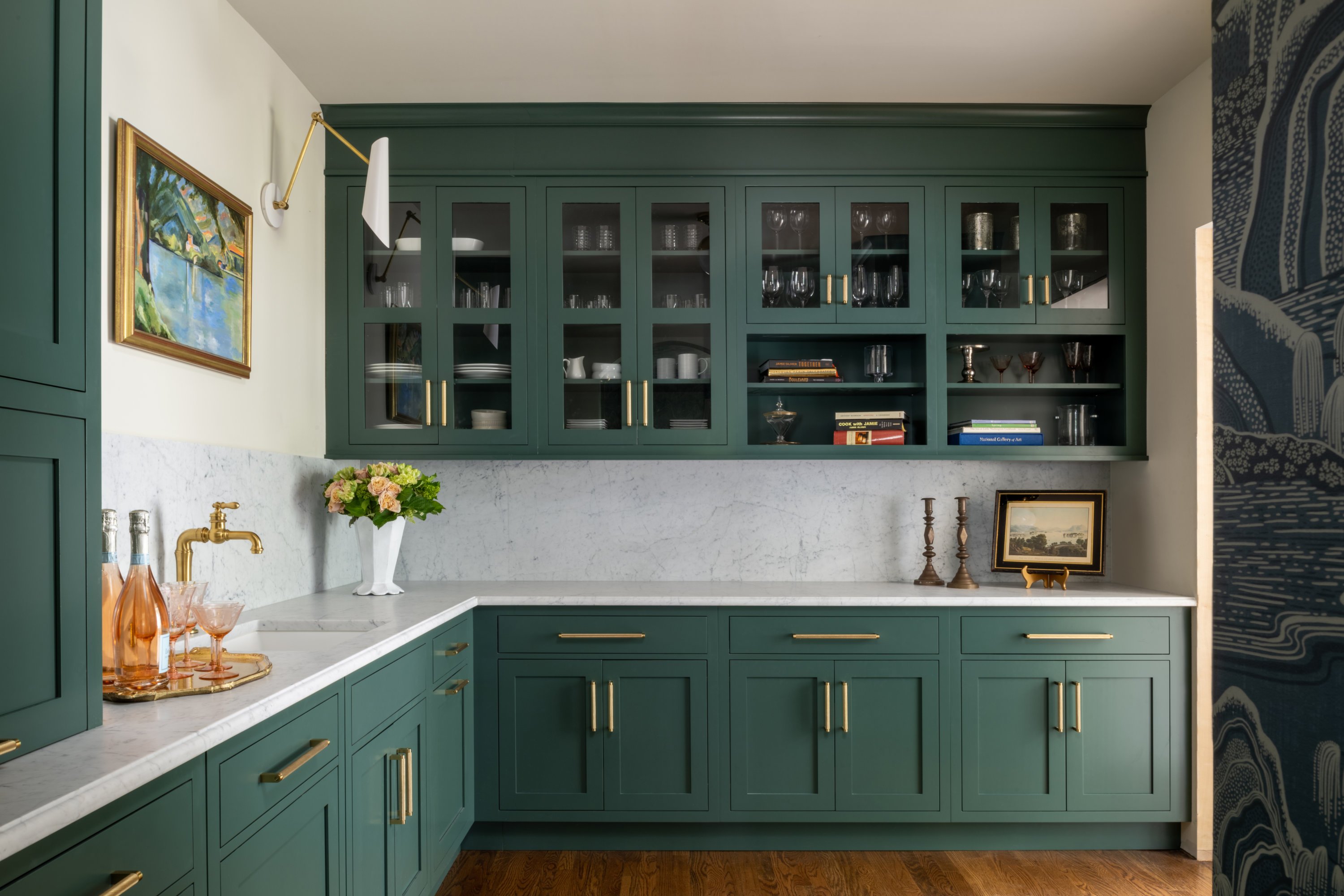
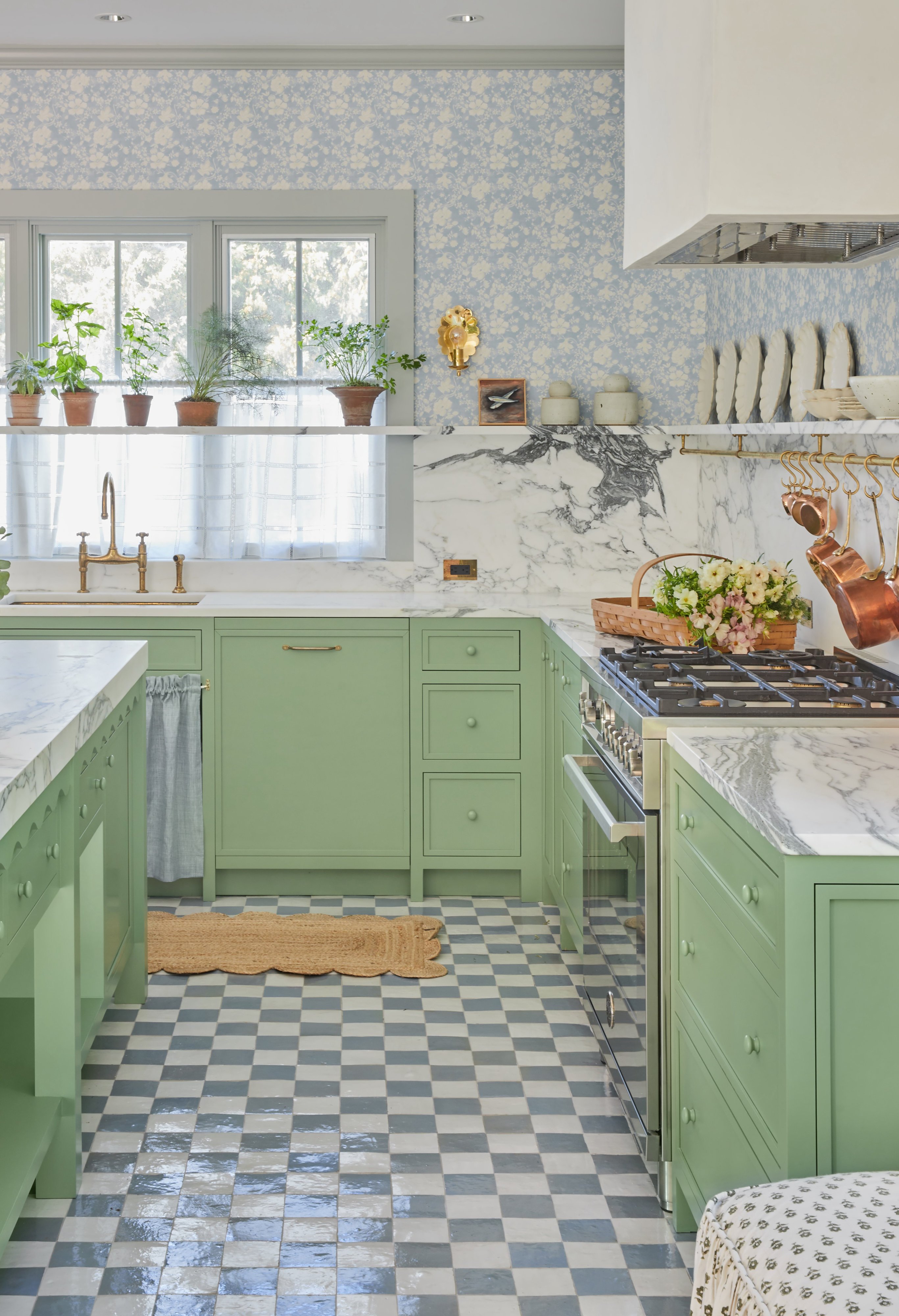
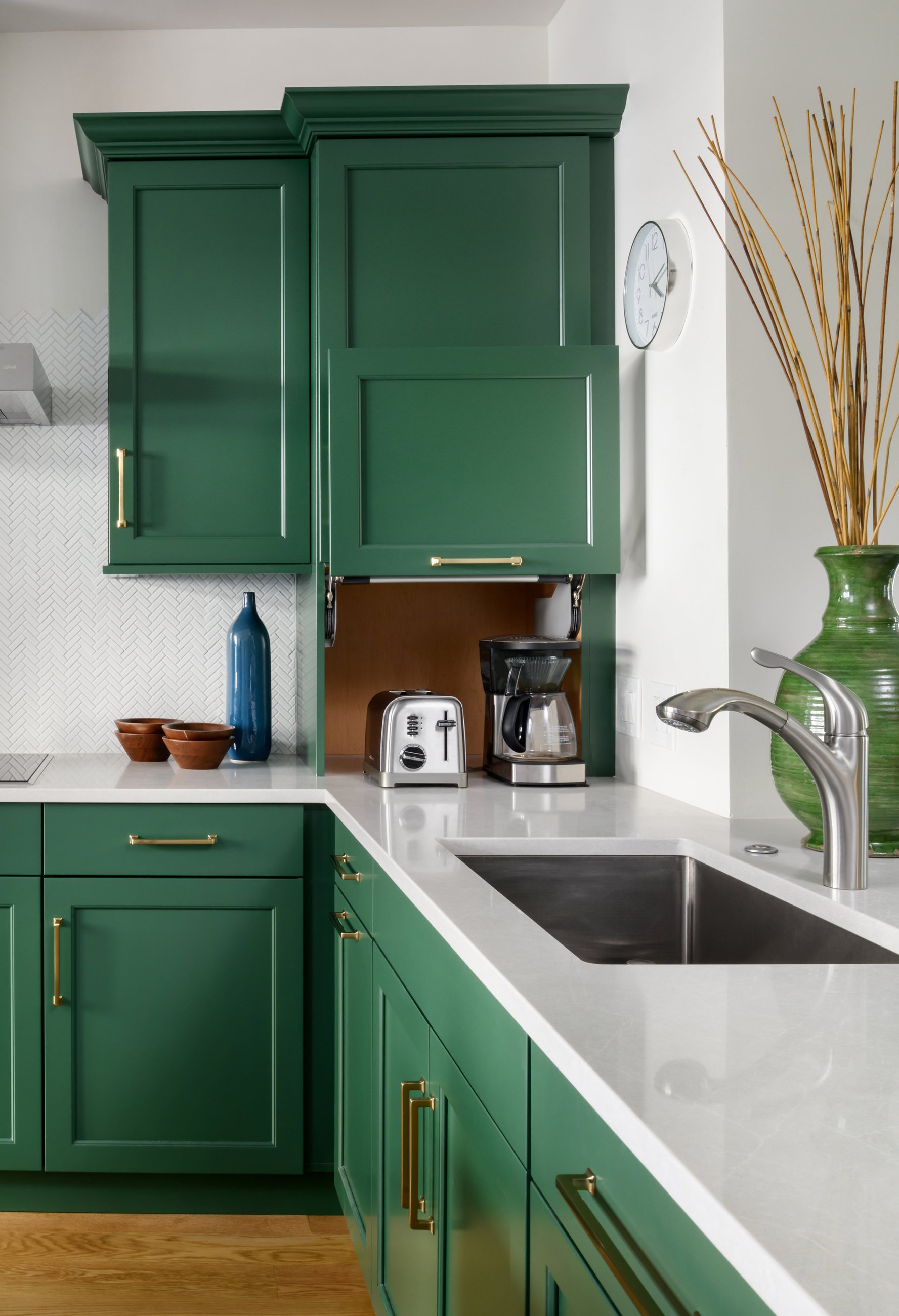

If You Go Green: Five Tips
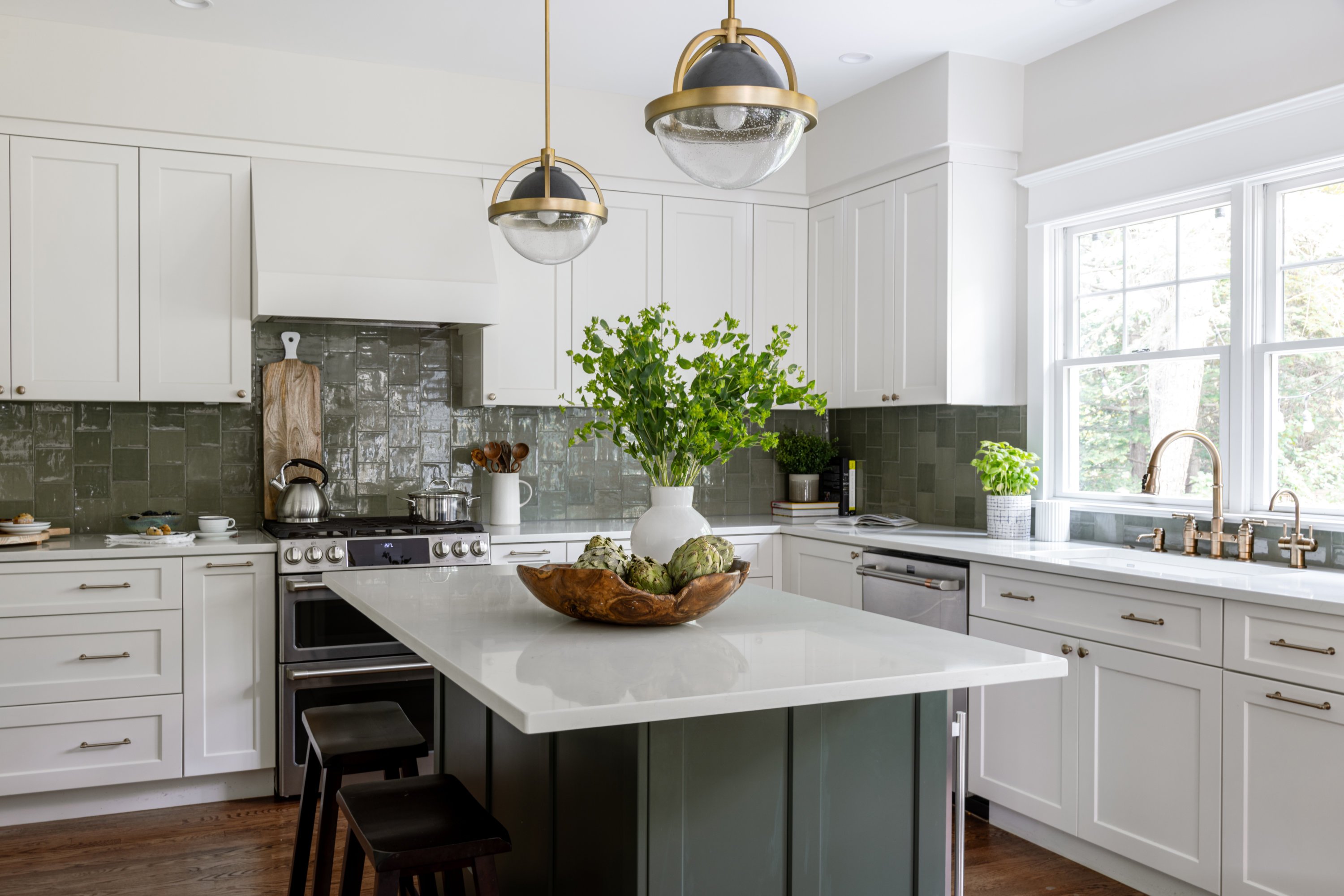
1. To help ensure that green cabinets stand the test of time, opt for classic styles and natural materials.
One issue with avocado is that it was often paired with less tasteful materials, like Formica countertops and linoleum floors. “The cheap, gimmicky feel of the avocado popular in the ’70s lies more in the materials used back then,” says Zoë Feldman of Zoë Feldman Design in DC. “The application was also bad: Kitchens featured cabinets, appliances, floors, and a backsplash all in the same color.” So it wasn’t necessarily the shade that was bad—avocado, after all, is found in nature. Says Moayyed: “The trend these days is going in the opposite direction of white kitchens, so even avocado green could make a return.”
2. How big your kitchen is–and how much light it gets–can dictate which colors will look best.
“For smaller kitchens, softer, lighter greens can make the space feel more open,” Winn says, “whereas darker greens suit larger spaces well, lending them a cozy, sophisticated feel.” Dark green can be used in small kitchens, he notes, but be sure to balance it with lighter elements—and, possibly, reflective finishes and strategic lighting—to avoid making the space feel cramped or too dark. How much natural light your kitchen receives makes a difference in any color choice as well, of course, because sunlight can change a color’s appearance.
3. Whether your house is traditional or modern can also affect color choice.
“In a contemporary kitchen, an emerald or forest green can enhance the modern feel,” says Mary Gordon, vice president at InSite Builders & Remodeling in Bethesda. “For a charming cottage or farmhouse style, softer greens like sage offer a cohesive feel.”
4. Be mindful of the finish you select.
Matte is seen as contemporary and understated, satin is subtle (and easy to wipe down), and glossy can make a space appear larger due to its ability to reflect light, Gordon says.
5. Once you’ve landed on a green, look at its undertones as you design the rest of the kitchen.
Winn says neutral hues—which pair nicely with almost any shade—look particularly good alongside green cabinets. “They have a unique synergy,” he says, because “neutrals like beige, taupe, and gray mimic the natural world’s colors, and these elements coexist harmoniously.”
But which neutrals to pick? Winn explains that greens contain either yellow or blue undertones. Sage green, which has a yellow undertone, looks best with warm neutrals; together they can create a cozy, inviting space. Yellow undertones also work with light woods, including oak and maple. A deeper emerald green, Winn explains, has blue undertones and will shine when paired with cool neutrals—for instance, slate gray, brushed silver, or chrome: “These combinations emphasize the elegance and boldness of emerald.”
Paint Picks
Local designers share their favorite greens for kitchens

Benjamin Moore “Rushing River”
“Rushing River would work beautifully for a kitchen and pairs well with oak and walnut woods.”–Catherine Ebert

Farrow & Ball “Pea Green”
“Think about the vibe you’re going for. If it’s bright and energetic, this light, springy green can be a fun option.”–Zoë Feldman

Sherwin-Williams “Inverness”
“If you’re looking for a green that pulls in the colors of nature, this is for you. A bright and mossy green, it was perfect for a project where we wanted to pair it with a fun wallpaper for extra color and texture.”–Susan Sutter

Farrow & Ball “Pigeon”
“Pigeon is my go-to because of its versatile, sophisticated blend of green, gray, and blue undertones that pair perfectly with a variety of colors and materials.”–Mary Gordon

Benjamin Moore “Essex Green”
“This sophisticated green feels both luxurious and down to earth. Its deep, almost black-green shade makes it perfect for creating an impactful yet timeless statement. It’s suitable for both modern and traditional kitchens, and pairs with a variety of materials and finishes.”–Michael Winn
This article appears in the July 2024 issue of Washingtonian.


